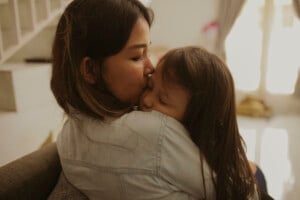As a child of the ’80s, I remember when kindergarten was only a half-day long, and elementary school was a place where learning was fun. I also remember never coming home with homework until I was in fourth grade. I didn’t realize just how different school was nowadays until my first child started kindergarten a few years ago. When we, parents, were told what to expect when it came to homework, I thought the teacher was joking. Homework?! In kindergarten?! You’ve got to be kidding.
She wasn’t. And neither was my child’s first-grade teacher the following year. I was shocked at the amount of homework my child came home with every week, and honestly, I thought it was pretty pointless. And even though my instincts told me that elementary school homework was unnecessary, I trusted the teachers and ensured my kid got it done. But I was never really convinced of its effectiveness.
It turns out my instincts were pretty spot on, according to some experts. While many elementary educators routinely assign up to 30 minutes of homework a night to their students, some teachers and researchers believe this habit is unnecessary and could harm a young child’s education.
There Is Minimal Benefit to Homework for Younger Children
As I experienced with my kiddo, these days, it’s normal for teachers to dole out homework assignments in dumbfounding amounts, even to kindergarteners. In a 2010 survey of more than 2700 U.S. kindergarten teachers, 40% said they believed that “homework should be given to kindergarten children almost every day.”1
Most education organizations support the general rule of thumb of at least 10 minutes of homework a night per grade level. That means 10 minutes a night for first graders and adding ten more minutes for each higher grade level. However, there are very few studies that have proven that there is any benefit in assigning homework to the younger grades. One study by Duke University social psychologist Harris Cooper, Ph.D., showed that not all students benefit from doing at-home assignments.2 Cooper and his colleagues reviewed studies published from 1987 to 2003 and found that homework was linked to better test scores in high school and, to a lesser degree, in middle school. Yet they found only faint evidence that homework assignments provided academic benefits in elementary school.
More and more teachers, however, are seeing the drawbacks to such rigorous homework requirements and have had enough. One teacher wrote in an article that “minor academic benefits to assigning mandatory nightly homework simply do not outweigh the substantial drawbacks, which include potentially turning young children against school at the beginning of their academic journey.” She stopped assigning homework to her second-grade students. Instead, she sent home a list of ideas that encouraged at-home learning. She found that her students overwhelmingly used their free time to explore ideas that interested them and started doing more work at home.3
What Helps Young Children Learn Most Effectively?
Here are some methods that can best help children learn:
Read Aloud and Encourage Independent Reading
Young children learn language and vocabulary best by hearing it all around them.4 By reading aloud to your children, you are helping them to build their vocabulary and recognize words they see often. You are also teaching them the structure of sentences, paragraphs, and conversations if they follow along as you read aloud. For young kids who can read on their own, provide as many educational (but fun!) books they can explore on their own.
Encourage Free Play
Many life skills, social skills, and problem-solving skills are learned when children play together.5 If you have more than one young child, provide plenty of opportunities for them to play together. Or set up play dates or get-togethers with children who are similar in age to your child. Get them outside when it’s nice out and let them soak up some sun while they’re busy learning!
Provide Sensory Activities
Allow your child to play with blocks, magnets, or beads. Encourage coloring, drawing, and painting. Sensory play can even include playing instruments or dancing.6 Anything that involves the child’s senses: taste, touch, sound, smell, sight, movement, and balance is beneficial for learning. These activities support language development, cognitive growth, fine and gross motor skills, problem-solving, and social interaction.
Play Games
Play rhyming games, letter games, shapes, and numbers games. Provide mazes, word find puzzles, hidden picture puzzles, and crossword puzzles for your child to work on at home. Try having a family board game night and playing something simple like Monopoly or Chutes and Ladders (remember those?). Playing like this will give their little brains a good workout, but they will be too busy having fun to notice!7
Of course, there will be kids who love to do worksheets and practice the skills they’ve learned in the classrooms. If your kid loves this sort of thing, there’s absolutely nothing wrong with providing that kind of busy work! But, many teachers are beginning to realize that giving children more free time and encouraging them to follow their interests is far more beneficial to learning than stressful, mandatory worksheets.8
Do you have a child who is in elementary school? How much homework does your child get assigned? Do you feel that elementary school homework is helpful or stressful for your child?






























